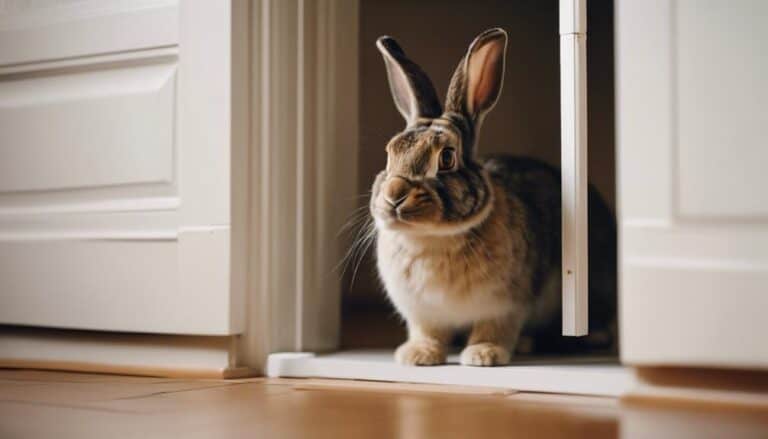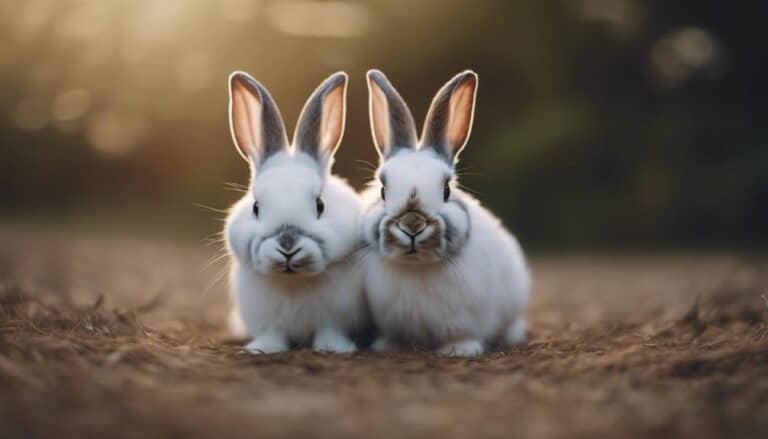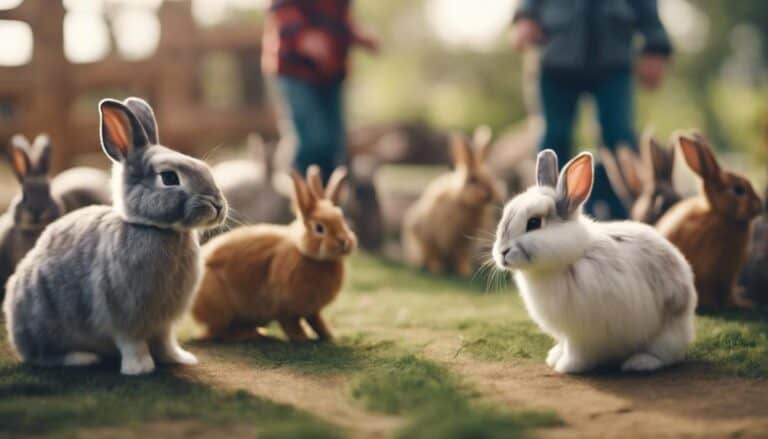So, you've encountered a wild rabbit that's super chill with humans, maybe even letting you pet it? That's pretty surprising, right?
Rabbits are supposed to be wary of people, but sometimes they can be really friendly. There are some interesting reasons why this might happen.
One reason could be that the rabbit has had lots of positive interactions with humans before. If it's used to people being kind and gentle, it might start to feel comfortable around them.
Another possibility is that the rabbit is looking for food. If it associates humans with tasty treats, it might start to trust them more.
And then there are some rabbits that just have unique personalities – they might be more curious or friendly than others.
Whatever the reason, it's clear that wild rabbits can be pretty complex creatures. They're not always as shy as we think they are.
By looking at the different factors that influence their behavior, we can gain a better understanding of how they interact with humans.
Contents
Key Takeaways
So, why would a wild rabbit let humans pet it? There are a few reasons for this.
Firstly, sometimes wild rabbits get used to humans being around. This is called habituation. If they have positive experiences with humans, like being fed or not being harmed, they start to feel comfortable around them.
Some wild rabbits might also be socialized with humans from a young age. This means they learn to trust humans and see them as non-threatening.
It's also important to remember that, just like people, wild rabbits have different personalities. Some might be more friendly and open to human interaction, while others might be more scared or aggressive.
If a wild rabbit has consistent, positive interactions with humans, it can build trust. This trust can lead to the rabbit feeling comfortable enough to be petted.
Lastly, if a wild rabbit is given food regularly by a human, it might start to associate the human with a positive experience. This can make the rabbit feel more comfortable and accepting of human presence, even to the point of letting them pet it.
Natural Behavior of Wild Rabbits
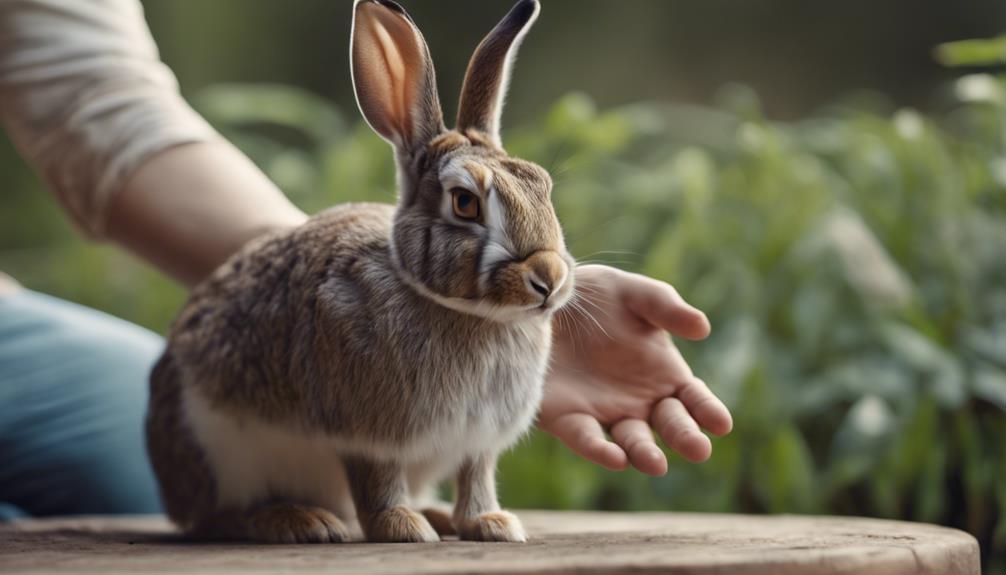
Ever wondered why wild rabbits behave in certain ways around humans? Well, it's because they're truly wild animals, not domesticated like the rabbits you might've as pets.
Their behavior is rooted in their natural instincts, which tell them to be wary of humans and flee if they feel threatened.
Unlike pet rabbits, which have been bred to be more comfortable around people, wild rabbits have a strong sense of self-preservation when they're around humans.
They're not used to being around people, so they're naturally more cautious.
When you encounter a wild rabbit, remember that it's a wild animal.
Its instincts tell it to see humans as potential predators, which triggers a flight response.
This is a natural survival mechanism that's been developed over generations.
Understanding this can help you appreciate and respect wild rabbits when you see them in their natural habitats.
Trusting Human Interactions
Wild rabbits are naturally wary of humans, but with consistent positive interactions, they can eventually learn to trust us. This process is fascinating, and by studying their behavior, we can gain a deeper understanding of how they form relationships with humans.
One way wild rabbits show trust is through their body language. They'll relax their posture, move gently, and even lower their ears when they feel comfortable around humans. It's a subtle but telling sign that they're starting to trust us.
Food plays a significant role in building trust with wild rabbits. When we provide them with food, they start to associate humans with positive experiences. This can lead to a strong bond between the rabbit and the person feeding them.
Consistency is key when it comes to building trust with wild rabbits. If we approach them calmly and offer treats gently over time, they're more likely to trust us. It's almost as if they're thinking, 'Hey, this human is okay. They're not going to hurt me."
Interestingly, wild rabbits can also learn to trust humans by observing other rabbits that have positive interactions with people. This social learning aspect is crucial in understanding how they form relationships with humans.
Habituation to Human Presence
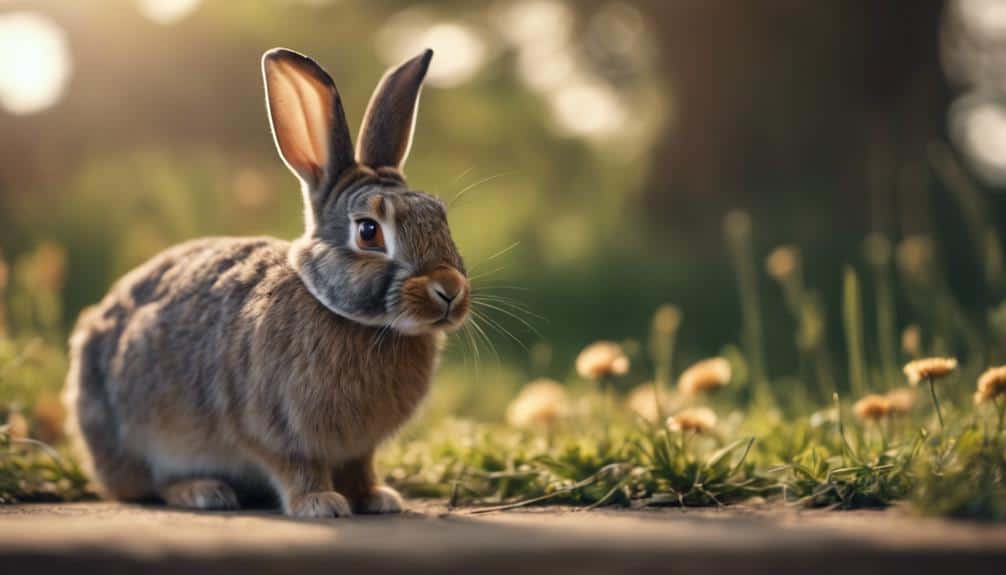
Rabbits can get used to humans being around if they see them regularly in a safe environment. This is called habituation. When a wild baby rabbit meets humans a lot and nothing bad happens, it starts to think humans aren't a threat.
Over time, the rabbit's fear of humans goes away, and it becomes okay with them being close by.
Habituation is a big part of how wild animals like rabbits get domesticated. If you help wild baby rabbits get used to humans, it's easier to take care of them in captivity or even in semi-wild areas.
This can be good for both the rabbits and humans. For the rabbits, it means less stress and better living conditions. For humans, it means they can observe and learn more about these amazing animals.
When wild rabbits get used to humans, they can become comfortable enough to even want to hang out with them.
Seeking Food or Shelter
Wild rabbits might come near people because they smell food. They're attracted to things like vegetable gardens or leftover pet food.
They might also look for a safe place to hide in things people have built, like sheds or houses, to get away from predators or bad weather.
This can help them get used to being around people, which can make them feel more comfortable.
Food-Seeking Behavior
When we feed rabbits, they might start to like being petted, especially in areas where they get food regularly. But why does this happen? Well, there are a few reasons.
First, rabbits in cities or suburbs might get used to humans being around and having access to food. This means they're more likely to interact with people. It's like they're saying, 'Hey, humans are okay, and they might've some snacks!'
Sometimes, wild rabbits might come to us not just for food, but also because they're looking for a safe place to hide from predators. This shows that they've to balance staying safe with finding food.
However, when rabbits lose their fear of humans because of food, they can get sick from diseases like tularemia. They might also have bad encounters with humans. Not good.
Also, if rabbits get too used to humans giving them food, they might start to rely on us instead of eating their natural diet. This can lead to malnutrition and health problems in the long run.
Understanding all these factors can help us see how complicated the relationship is between wild rabbits, food, and humans.
Shelter-Seeking Tendencies
When the weather gets bad or their natural habitats are limited, wild rabbits might look for shelter in human-made structures like sheds or garages. This often happens when they need protection from harsh weather or predators. These structures provide a safe space for them until things get better.
You might notice that wild rabbits tend to seek shelter near human settlements, but it's essential to remember they still have their wild instincts. When they face environmental challenges, their survival instincts kick in, and they explore alternative shelter options, which sometimes leads them into human-provided spaces.
This behavior shows how adaptable wild rabbits are when dealing with tough situations. However, it's crucial to keep a respectful distance and not interfere with their natural tendencies. If we encourage them to rely on human-provided shelters, it can disrupt the balance of their natural habitats and have unintended consequences for both the wild rabbit population and their ecosystem.
Human-Bonding Opportunities
When wild rabbits live near human settlements, they might form a bond with humans. But why does this happen? Well, there are a few reasons.
For one, rabbits are always on the lookout for easy food sources. If they can find scraps like veggies or fruits near human homes, they'll take advantage of it. This is because they're opportunistic feeders, meaning they'll eat whatever they can whenever they can.
Another reason rabbits might bond with humans is for safety and shelter. Human environments can provide protection from predators, which is a big deal for rabbits. If they can hang out near human dwellings, they'll be safer and more likely to survive.
Forming a bond with humans can also help rabbits reproduce more successfully. If they can get food and shelter from humans, they'll be healthier and more likely to have babies. This is a big deal for wild rabbits, since their main goal is to survive and make more rabbits.
Some rabbits might even learn to associate humans with good things, like getting food. If they learn that humans equal food, they'll start to form a bond with them. This is basically like classical conditioning, where the rabbit learns to connect a stimulus (humans) with a reward (food).
In all these scenarios, wild rabbits are showing how adaptable they are. They're taking advantage of the resources humans provide to help themselves survive and reproduce. The bond that forms between rabbits and humans in these situations is a pretty interesting example of how wildlife and human environments interact.
Health or Injury Considerations
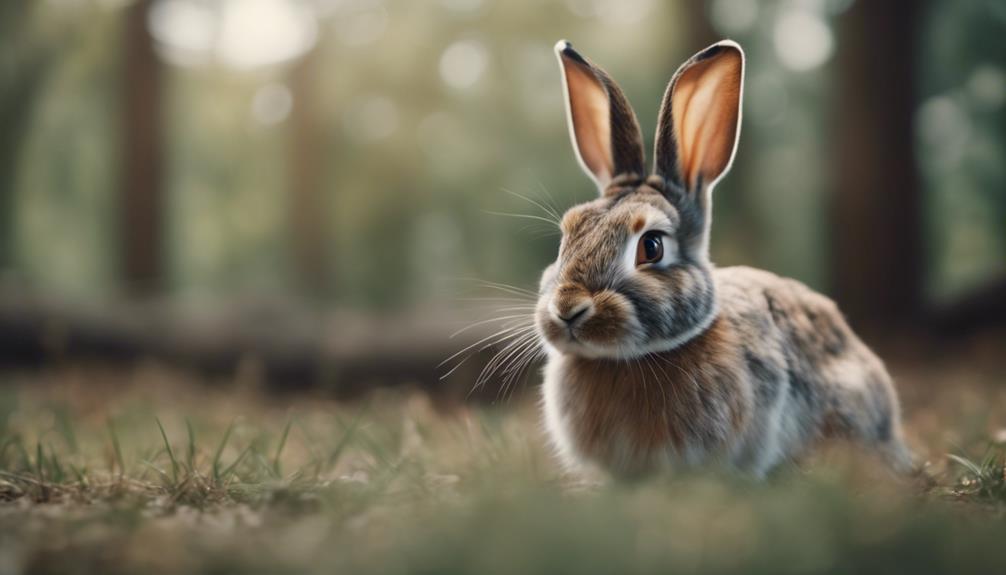
When you're petting your rabbit, keep an eye out for any signs that they might be in pain or discomfort. This is important because it can be a tip-off that there's an underlying health issue that needs attention.
Take a close look at your rabbit’s body to check for any unusual lumps, wounds, or changes in behavior. If you notice anything out of the ordinary, it could be a sign of a health problem that needs to be addressed. Additionally, monitor your rabbit’s eating habits and energy levels, as these can provide further insight into their overall health. If you observe any significant changes or if your rabbit experiences rabbit fur loss symptom causes, it’s important to consult a veterinarian promptly. Early detection and intervention can make a significant difference in the outcome of many health issues in rabbits.
Rabbit's Physical Condition
When it comes to rabbits, their physical condition plays a significant role in how well they tolerate being petted by humans. If a rabbit is in good health, they're more likely to enjoy human interaction.
A healthy weight is crucial for rabbits. If they're too heavy or too light, it can lead to a range of health problems that might make them uncomfortable and less tolerant of petting.
A well-groomed, clean coat is usually a sign of good health. On the other hand, skin issues or a matted coat can be a sign of underlying health problems that might make them less keen on human interaction.
Clear, bright eyes and clean ears are a good sign. Any discharge, redness, or crustiness in these areas could indicate health problems that affect their behavior around humans.
If a rabbit is alert, active, and engaging in normal behaviors, it's a good sign they're in good physical condition – and more likely to enjoy being petted by humans.
Signs of Injury
Observing a rabbit for signs of injury is crucial in understanding their health status and potential discomfort with human interaction. If you're a wildlife rehabber or someone involved in animal rescue, recognizing these signs can aid in providing appropriate care.
When dealing with Eastern cottontails, common indicators of injury include limping, favoring one leg, or reluctance to move. These behaviors may suggest a leg injury, such as a fracture or sprain. If you notice any open wounds, bleeding, or swelling, it's vital to get professional help right away to prevent further harm.
Changes in behavior are also critical signs of injury in rabbits. If an Eastern cottontail that's usually active suddenly appears lethargic, disoriented, or aggressive, it might be signaling distress or pain. Approach such situations with caution and seek expert advice promptly. By being vigilant for these signs of injury, you can promote the well-being of wild rabbits and contribute to their successful rehabilitation.
Health Risks Involved
Wild rabbits can be cute, but they can also pose some serious health risks to both humans and domestic animals.
Handling wild rabbits can spread diseases like tularemia, which can have severe symptoms in humans if not treated quickly.
In addition to diseases, wild rabbits can also carry parasites like fleas, ticks, and mites. These can be passed on to humans and domestic pets through contact, which can be a real problem.
If you're not careful, wild rabbits can also scratch or bite when they feel threatened. Their sharp claws and teeth can cause some nasty wounds.
Another risk is internal parasites like tapeworms. If you come into contact with contaminated feces or soil, you or your pets could end up with a nasty infection.
Juvenile or Orphaned Rabbits
When you come across a baby rabbit all alone, remember that they're born blind and totally dependent on their mothers for care and protection. If a wild rabbit is orphaned or juvenile, it might act weird, like letting you pet it, because it imprinted on the first living thing it met – which means it's not scared of humans.
Before you do anything, try to find out if the mom is coming back. You can do this by putting some markers like yarn or twigs over the nest. If the rabbit is about the size of a chipmunk, has its eyes open, and its ears are up, it's probably old enough to be on its own and doesn't need your help.
Even if a wild rabbit seems friendly and comes up to you, remember that it's still a wild animal and mightn't make a good pet. Plus, keeping wild rabbits as pets is often against the law and can be bad for both you and the rabbit.
Rare Exceptions in the Wild
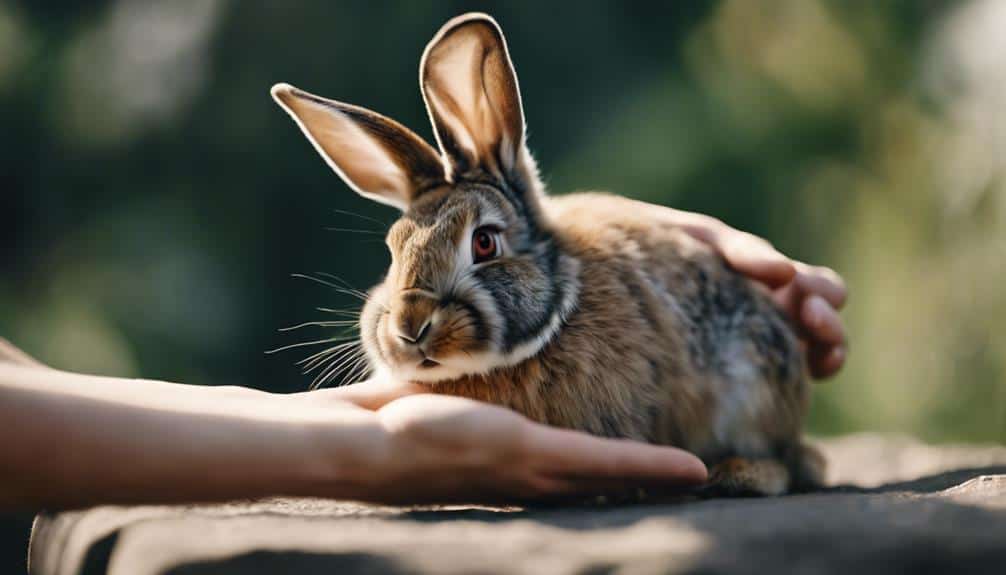
Rare exceptions in the wild show us that wild rabbits don't always behave as we expect them to. Sometimes, they'll do things that go against their natural instincts, like being friendly towards humans. This is pretty interesting and makes us wonder what might be behind such behavior.
One reason for this might be that, just like people, wild rabbits have their own unique personalities. Some might be more curious or tolerant of humans than others.
If a wild rabbit has had a good experience with a human in the past, like getting food without being harmed, it might be more open to being petted.
Rabbits that are socialized from a young age, either by humans or other animals, might also be more accepting of human interaction.
In some cases, environmental factors like habitat loss or food scarcity might force wild rabbits to seek out human interaction just to survive.
These exceptions in the wild remind us that animal behavior is complex, and even within a species known for being wary of humans, there can be a lot of individual variation.
Conclusion
So, why do wild rabbits sometimes let humans pet them? Well, there are a few reasons for this.
First, it could be due to habituation. This means the rabbit has gotten used to humans being around and doesn't see them as a threat anymore. Maybe the rabbit lives in a area where humans are always present, like a park or a backyard, and over time it's just gotten comfortable with their presence.
Another reason is that the rabbit might've formed a bond with a human through trust-building interactions. For instance, imagine a young rabbit that's been orphaned by a predator. A kind human might take it in, provide it with warmth and safety, and care for it. In this case, the rabbit might imprint on the human, forming a unique bond.
Lastly, the rabbit might be seeking food. If a human is consistently providing food, the rabbit might start to associate them with a source of nutrition, leading it to be more friendly and open to being petted.
These rare cases in the wild show just how complex animal behavior can be, and how special circumstances can lead to some pretty amazing interspecies relationships.

